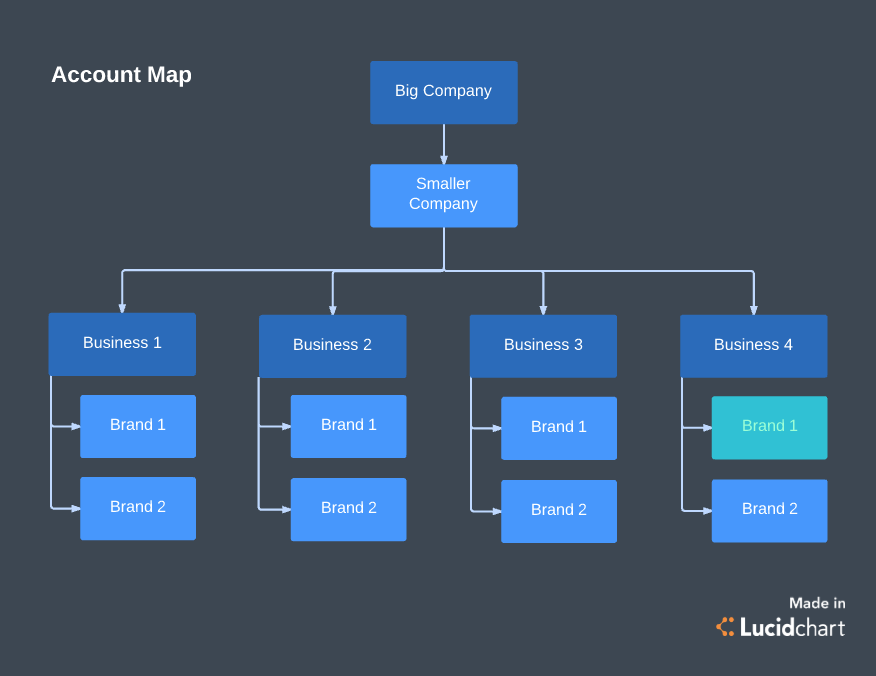You’ve heard us say it time and again. Lucidchart works where you do.
In an effort to continue integrating with the platforms you love, we announced at Dreamforce last year that we would be among the first companies to launch a Live App for Quip. Our Quip integration would allow users to embed and create diagrams right inside their Quip documents.
Based on the response we received—and the number of early access requests—we know Lucidchart users have been anxiously waiting to get their hands on this integration.
Now the time has come.
The Lucidchart Live App for Quip is available right now. See how you can add this Live App and increase the power of Quip as you embed flowcharts and other visuals with Lucidchart.
How does it work?
With the command @Lucidchart Diagram, you can embed existing Lucidchart diagrams into your Quip document or even create a new diagram on the spot. For the first time, we’ve embedded a Lucidchart editor right where you work, so you never have to leave Quip to create powerful visuals.
With the Lucidchart Live App for Quip, you can:
- Drag and drop shapes directly in Quip.
- Choose from professional templates to get started faster.
- Add shape libraries.
- Format colors and font size.
- Zoom, pan, or fit to scale.
If you’d like to access advanced features, such as layers/hotspots and automation features, you can access the full Lucidchart editor from Quip and then embed the diagrams you create back into your Quip document.
How do I get started?
Quip admins can easily add the Lucidchart Live App to their organization’s Quip site—just visit the Salesforce AppExchange.
Once your organization has added the Lucidchart Live App, you can create a diagram in Quip without even logging into Lucidchart. Just type @Lucidchart Diagram to open the editor—those who have access to the Quip document will also have access to your Lucidchart diagram.
To view and embed existing diagrams, you’ll need to link your existing Lucidchart account to Quip. Follow these four easy steps:
- Use the @Lucidchart Diagram command to insert the Live App into your document.
- Click “Diagram” to open the drop-down menu.
- Click “Connect Lucidchart Account.”
- Log in to Lucidchart from the newly opened tab, and select “Grant Access.”
We’ve included some use cases below to illustrate just a few of the ways that Lucidchart for Quip can drive clarity within your organization.
Use case #1: Account planning
Along with our Quip integration, we brought another exciting announcement to Dreamforce this year: new solutions for sales. And it turns out that the two work together perfectly.
We understand that sales teams need a quick and clear way to communicate account status, not only because reps often work together to navigate through complex accounts but because leadership needs to accurately predict pipeline. In Lucidchart, sales reps can outline account strategies and build influence maps to see which individuals they should target.
Then, using our Quip integration, sales reps can easily pull these visuals into a document with other essential information, including Salesforce records and next steps. By updating these documents and diagrams in real time, teams can sync and close bigger deals faster.
Psst… Lucidchart also has an integration with Salesforce coming down the pipeline. This new integration will allow you to automatically import Salesforce contacts into Lucidchart, so you can start building your influence maps faster. Stay tuned!

Use case #2: Product development
But this integration isn’t limited to the sales org—Lucidchart for Quip works for any project that requires collaboration with multiple teams. For example, if you’re a product manager, you’ve likely felt the stress of coordinating the efforts of engineers, UX designers, and leadership. Just start a document in Quip to collaborate faster.
Product managers and engineers can embed or create user flow diagrams directly in Quip, and UX designers can work from that information and add mockups to the document. Add a calendar to track important milestones and deadlines, plus any additional notes, and you have a single source of truth for your project.

Use case #3: Database design and Salesforce schemas
If you design, build, or maintain databases, you're all too familiar with ERDs. These diagrams may help you understand data flow and database structure, but they can be painful to build and maintain. That’s no longer the case, thanks to Michael Wheeler, Salesforce consultant extraordinaire.
Using the Salesforce Metadata API, Michael built SchemaPuker, an application that imports and visualizes your Salesforce schema in Lucidchart. To use this tool, simply follow these steps:
- Log in with your Salesforce credentials to grant permission for SchemaPuker to access your metadata.
- Select the fields and relationships you'd like to visualize. You'll then be given a PostgreSQL file you can import into Lucidchart.
- In Lucidchart, simply open the “Entity Relationship” shape library and select “Import.”
Once you've imported the file, you can drag and drop any entities onto the canvas. The fields, attributes, and relationships will be instantly displayed on the canvas. Embed and edit this document within Quip so other individuals and teams can reference it. In Lucidchart, you can visualize database schema from any DBMS, including SQL, MySQL, and other systems.
Open this template for more information about ERD import/export in Lucidchart.
We’re excited to see what other use cases you come up with as you collaborate within Quip. If you’d like to learn more about the Lucidchart Live App, join us for our webinar on April 17, 2018.
Register nowLucidchart users have seen productivity increase by 38% in their organizations. Integrate Lucidchart with the program you use daily, and see how much faster you work!
About the author

Shannon Williams graduated from BYU in English and then turned to the world of marketing. She works as a content marketing specialist at Lucid Software. Instead of writing her novel (like she should be), Shannon spends her free time running, reading, obsessing about Oscar season, and watching Gilmore Girls on loop.
About Lucidchart
Lucidchart, a cloud-based intelligent diagramming application, is a core component of Lucid Software's Visual Collaboration Suite. This intuitive, cloud-based solution empowers teams to collaborate in real-time to build flowcharts, mockups, UML diagrams, customer journey maps, and more. Lucidchart propels teams forward to build the future faster. Lucid is proud to serve top businesses around the world, including customers such as Google, GE, and NBC Universal, and 99% of the Fortune 500. Lucid partners with industry leaders, including Google, Atlassian, and Microsoft. Since its founding, Lucid has received numerous awards for its products, business, and workplace culture. For more information, visit lucidchart.com.
Related articles
Announcing Lucidchart for Sales
We're excited to announce Lucidchart for Sales - new resources and templates to help teams use Lucidchart to accelerate the sales process.
How to take advantage of Lucidchart’s Atlassian integrations
Push innovation forward when you combine the power Confluence, Jira, and Lucidchart. Find out how our Atlassian integrations allow you to visualize every aspect of your work in the platform you feel most comfortable in.

